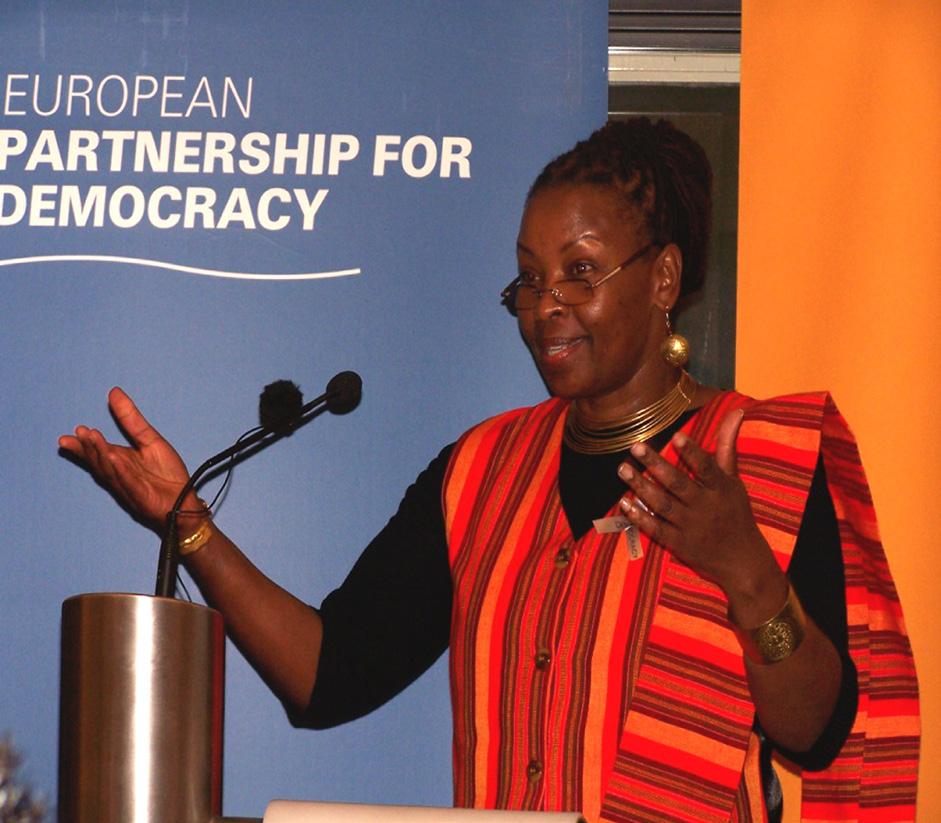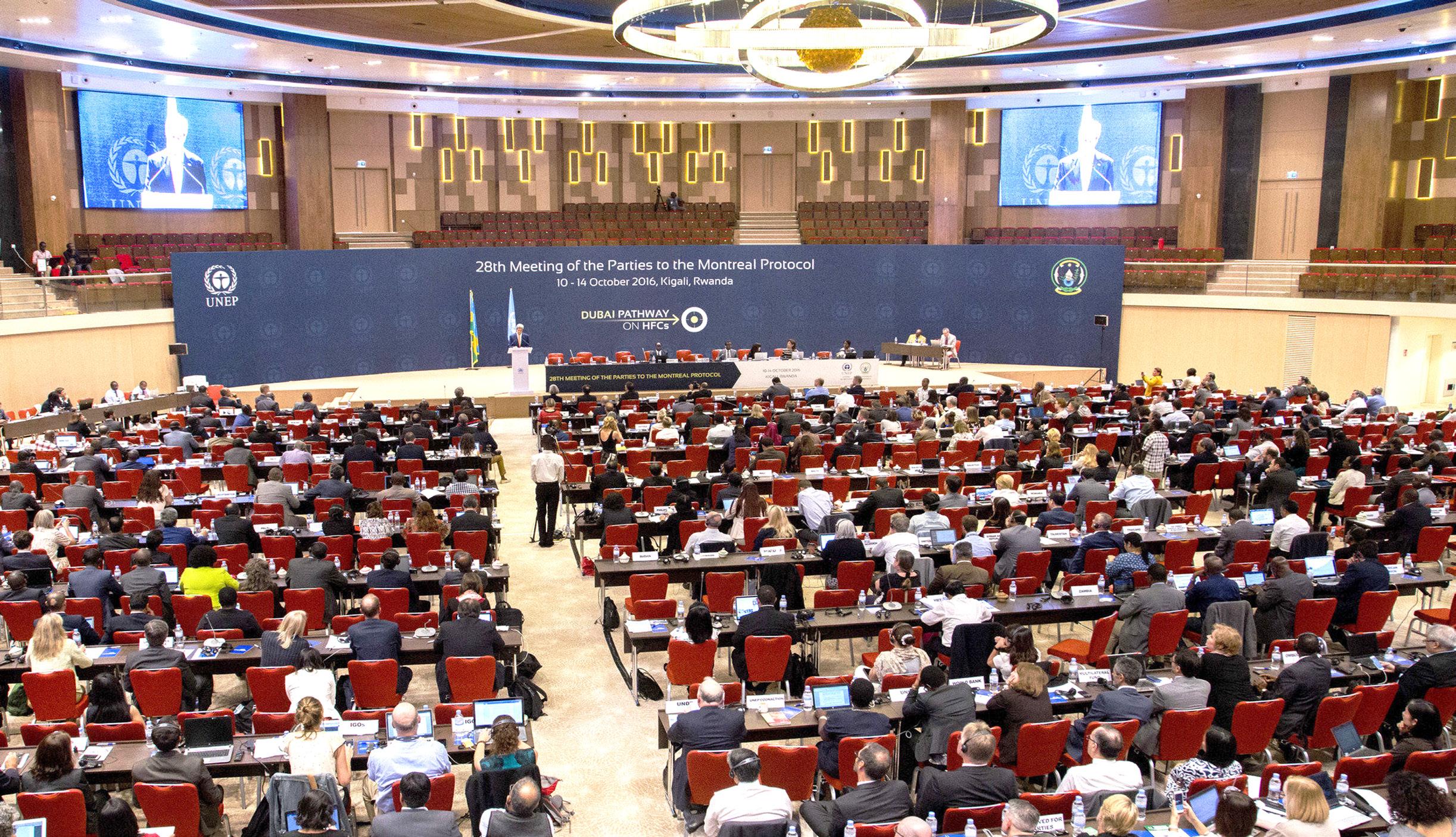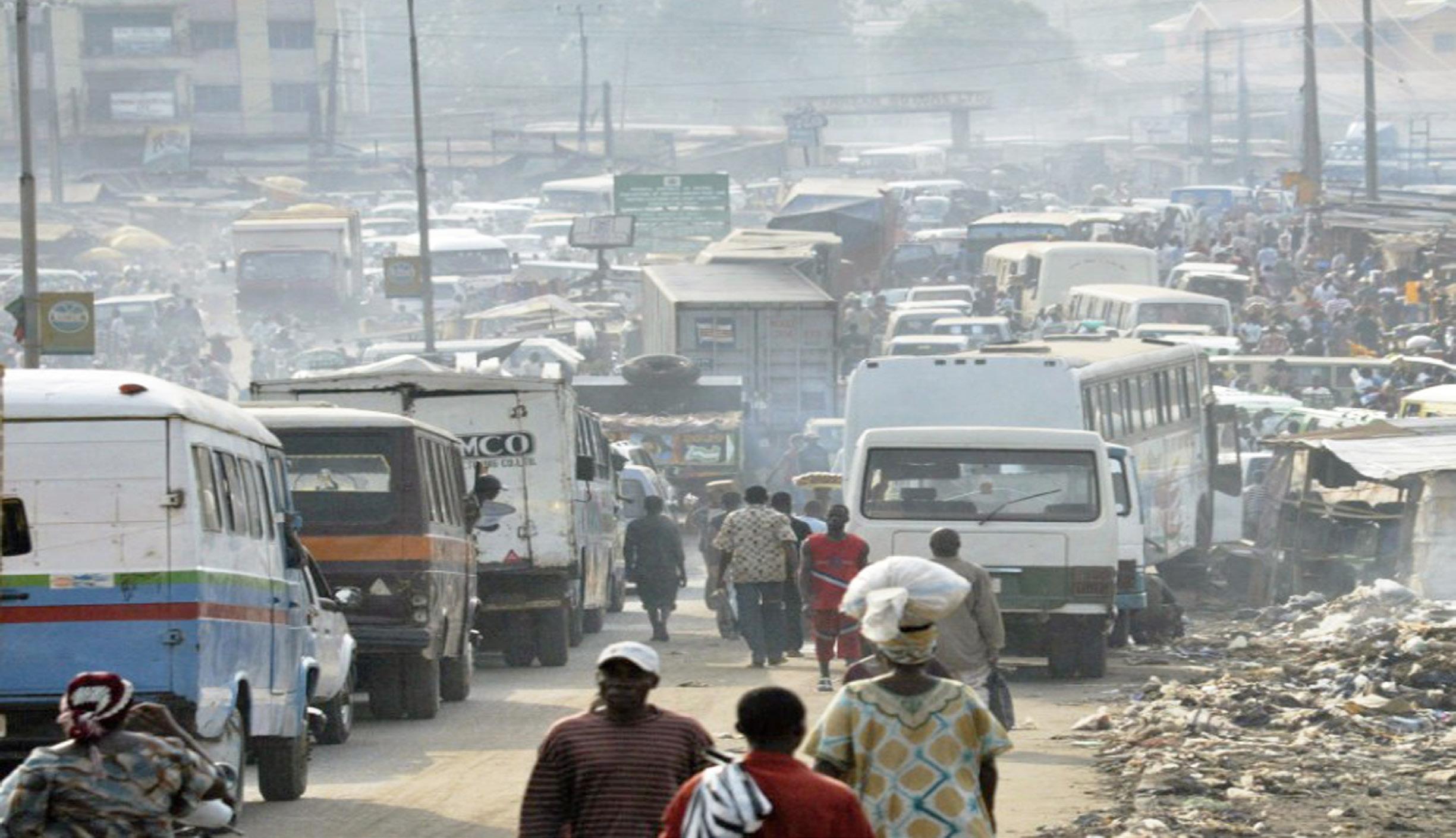
19 minute read
IUCN’s WCC in Hawai Inequalities exacerbate climate change impacts on poor and
CLIMATE CHANGE:
Inequalities exacerbate climate impacts on poor and vulnerable people – new UN report
Advertisement
By Staff Writer
Evidence is increasing that climate change is taking the largest toll on poor and vulnerable people, and these impacts are largely caused by inequalities that increase the risks from climate hazards, according to a new report launched by the United Nations, in early October.
“Sadly, the people at greater risk from climate hazards are the poor, the vulnerable and the marginalized who, in many cases, have been excluded from socioeconomic progress,” noted UN Secretary-General Ban Ki-moon in the World Economic and Social Survey 2016: Climate Change Resilience – an Opportunity for Reducing Inequalities, produced by the UN Department of Economic and Social Affairs (DESA).
“We have no time to waste – and a great deal to gain – when it comes to addressing the socioeconomic inequalities that deepen poverty and leave people behind,” he added.
Speaking to reporters at UN Headquarters in New York at the launch of the report, the UN Assistant Secretary-General for Economic Development Lenni Montiel said: “Persistent inequalities in access to assets, opportunities, political voice and participation, and in some cases, outright discriminations leave large group of people and community disproportionally exposed and vulnerable to climate hazards.”
He added that through transformative policies, the governmenst can “address the root causes of inequalities, to reduce the vulnerabilities of people to climate hazards, building their longer term resilience.”
On transformative policies, the Chief of Development Strategy and Policy at UN Department of Economic and Social Affairs, Diana Alarcon, said such policies could help build climate change resilience, close inequality gaps, provide access to financial services, to diversification of the livelihoods, to quality education and health and social security. She added: “it is that kind of transformation that leads to development.”
While there is considerable anecdotal evidence that the poor and the vulnerable suffer greater harm from climate-related disasters, the report determined that much of the harm is not by accident, but that it is due to the failure of governments to close the development gaps that leave large population groups at risk.
In Nepal, mountain infrastructure such as hydropower plants, roads, bridges and communication systems are at risk with climate change and more variability in water runoff.
Developing countries are the most affected by climate change impacts. Low-income countries suffered the greatest losses, including economic costs estimated at 5 per cent of gross domestic product.
The report argues that while climate adaptation and resilience are overshadowed by mitigation in climate discussions, they are vital for addressing climate change and achieving the Sustainable Development Goals (SDGs) by 2030.
PHOTO

Specifically, the report found that families living in poverty systematically occupy the least desirable land to damage from climate hazards, such as mud slides, periods of abnormally hot water, water contamination and flooding. Climate change has the potential to worsen their situation and thereby worsen pre-existent inequalities. The report shows that structural inequalities increase the exposure of vulnerable groups to climate hazards.
According to the latest data, 11 per cent of the world’s population lived in a low-elevation coastal zone in 2000. Many of them were poor and compelled to live in floodplains because they lacked the resources to live in safer areas. The data also underscore that in many countries in South and East Asia, and Latin America and the Caribbean, many people have no other option than to erect their dwellings on precarious hill slopes.
The report also found a larger concentration of poor and marginalized groups in arid, semiarid and dry sub-humid aridity zones which cover about 40 per cent of the Earth’s land surface. About 29 per cent of the world’s population live in those areas and are facing additional challenges owing to climate change.
Sites of floods in Budalabg’ District-Western Kenya
Transformative policies for addressing root causes
According to the report, building resilience to climate change provides an opportunity to focus resources on reducing long entrenched inequalities that make people disproportionately vulnerable to climate hazards. The best climate adaptation policies, the report states, are good development policies that strengthen people’s capacity to cope with and adapt to climate hazards in the present and in the medium term.
Looking ahead, the report recommends the use of improved access to climate projections, modern information and communications technologies, and geographical information systems to strengthen national capacity to assess impacts of climate hazards and policy options statistically.
The report voices a concern that international resources to support climate change resilience are insufficient. At last year’s Paris climate conference, informally known as COP21, countries committed to setting a goal of at least $100 billion per year for climate change mitigation and adaptation activities in developing countries. However, adaptation costs alone range from $70 billion to $100 billion per year by 2050 in the developing countries, and these figures are likely to underestimate real costs, according to the report.
The 2030 Agenda for Sustainable Development calls for transformative policies to deliver on our collective promise to build a life of dignity for all on a cleaner, greener planet.
“The challenges are enormous, but the world possesses the know-how, tools and wealth needed to build a climate-resilient future – a future free from poverty, hunger, discrimination and injustice,” the Secretary-General stressed in the report, noting the importance of the enabling policy environment as well as the support of the international community.
NEMA’s Executive Director, Dr. Tom Okurut, in the middle joined Little Hands in tree planting during WED celebrations
WORLD ENVIRONMENT DAY :

Little Hands Go Green and Nema Tie Up Partnership
Uganda’s Little Hands Go Green and National Environment Management Authority (NEMA) teamed up to drive awareness, excitement and sensitize Ugandans about conservation of the environment.
World Environment Day (WED) is celebrated every year on 5 June to raise global awareness to take positive environmental action to protect nature and the planet Earth. Uganda however celebrated it a day later, on Monday 6th June, in Gulu district under the theme “Conserve Wildlife, Sustain Livelihoods.”
World Environment Day activations kicked off on 3rd June with a appearances at Wobulenzi, Luwero, Bombo, Nakasongola, Mijera, Kafu, Kiryandongo, Bweyale and Kamdini Corner before visiting Hospitals, Markets, District Headquarters, NGO offices and people’s homes on 4th June.
On 5th June activations reached out to Watoto Church in Gulu ahead of visits to Kolo Abili Primary School, Gulu Baptist Primary School and Coch Ongaka Primary Schoo on 6th June, the day of the main celebrations.
This exercise activated the entire northern corridor with activities ranging from tree planting to anti-kavera sensitization and pass on environmental conservation messages. Joseph Masembe the CEO of Uganda’s Little Hands Go Green said these activities were carried out in all major town enroute to Gulu.
Uganda’s Little Hands Go Green and National Environment Management Authority have in the recent past had similar partnership that has registered tremendous success. The two organizations recently organized the International Children’s Climate Conference, green festivals and visits to schools where pupils have been taught how to care for the environment.
This article was originally posted earthfind. co.ug �




PHOTO
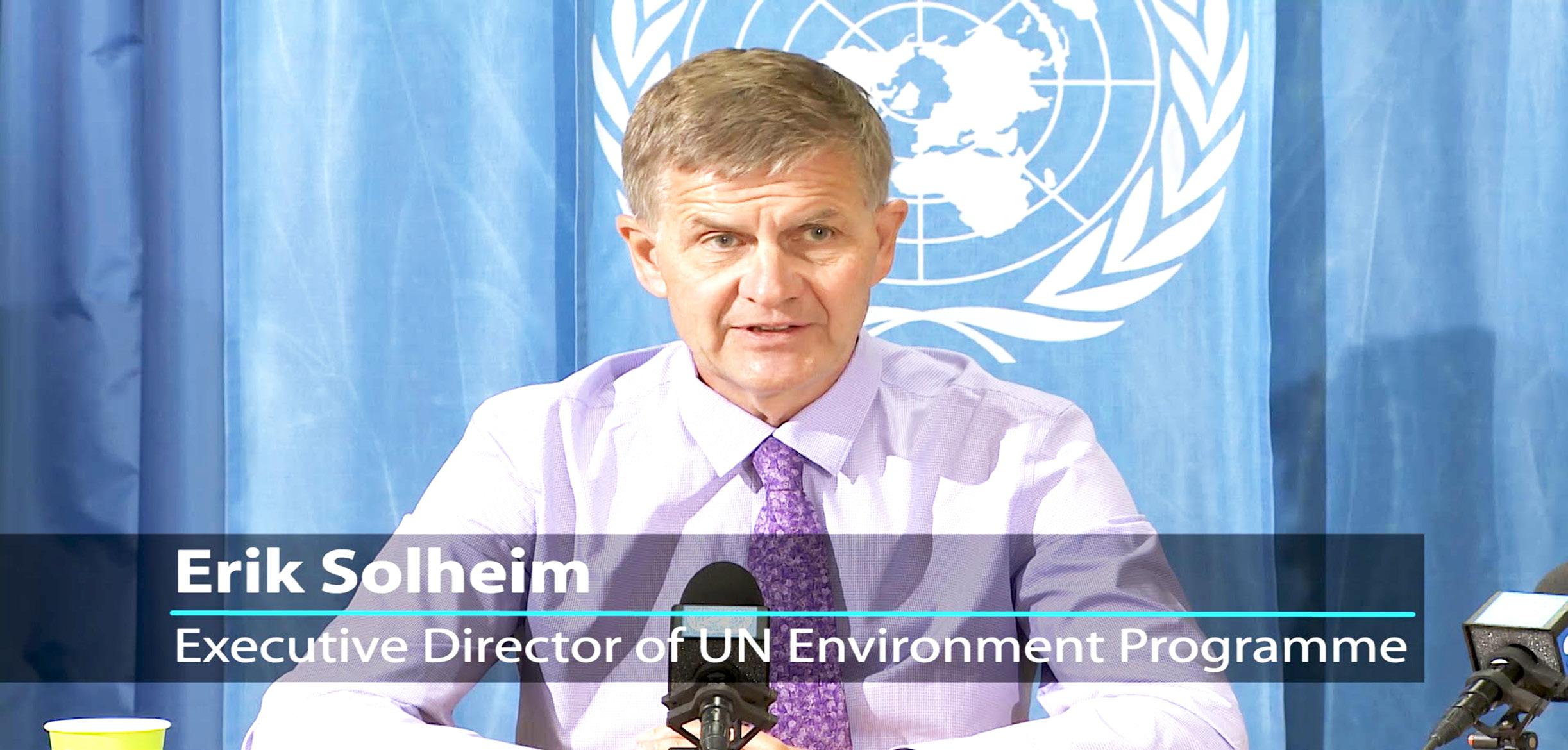
Mr. Erik Solheim, UNEP Executive Director
UN ENVIRONMENT: Erik promises to tackle environmental challenges
Former Norwian Minister for Environment and International Development, Mr. Erik Solheim, the new Executive Director of UNEP, has pledged to work with all countries to tackle world pressing environmental challenges, such as ocean and air pollution, the destruction of ecosystems, climate change and the relationship between the environment and conflict and migration.
Mr. Solheim joins UNEP after serving for three years as head of the Development Assistance Committee (DAC) of the Organization for Economic Cooperation and Development (OECD).
Solheim said, “There is an urgent need to fight climate change, halt ecosystem destruction, and reduce pollution for the benefit of all peoples everywhere. By protecting our planet, we protect ourselves and in the process can help bring every last person out of poverty. We all have a stake in a healthy planet.”
He noted other urgent areas to address include the private sector investment needed for sustainable development, greening the finance sector and creating jobs and markets with clean and green technologies. “Financing the preservation and rejuvenation of our planet cannot be the purview of governments alone. Private sector finance is both vital for sustainable development, and an opportunity for business. As never before, markets are rewarding investments in clean and green jobs and technologies.”
Solheim also underlined that issues like climate change and sustainable development are issues that no one country or organization can solve themselves, and that the world must come together to tackle environmental challenges.
“With successes like the Paris Agreement and the Sustainable Development Goals, the world has achieved a lot in recent years when it comes to the environment. We can achieve a lot more. But the only way to do this is by working cooperatively. I look forward to working with member states and welcoming voices and efforts from all parts of society to tackle our common challenges.
“Our planet is vulnerable, but I’m optimistic we can resolve the environmental problems we face. There’s little we can’t achieve when we pull together with cooperation, collaboration and a can-do attitude.” Having spent most of his career fighting for the environment in national and global politics, including through nongovernmental organizations and during his combined ministerial portfolio, Mr. Solheim has focused on the challenge of integrating environmental and developmental issues.
During his ministerial tenure, Norway reached 1 per cent of its GDP for overseas development assistance and passed the unique Nature Diversity Act. He initiated the process leading to the global coalition to conserve and promote sustainable use of the world’s rainforests - the UN REDD - gaining invaluable diplomatic and organizational experience.
Holding an undergraduate degree in history and social studies from the University of Oslo, Mr. Solheim has received several awards for his work on climate and environment, including UN Environment Programme’s “Champion of the Earth” award, and contributed to a number of peace and reconciliation efforts, most notably as the chief negotiator of the peace process in Sri Lanka.
Mr. Solheim was born in 1955, he is married, with four children.
GREENING WORLD ECONOMY: The greatest challenge facing world leaders
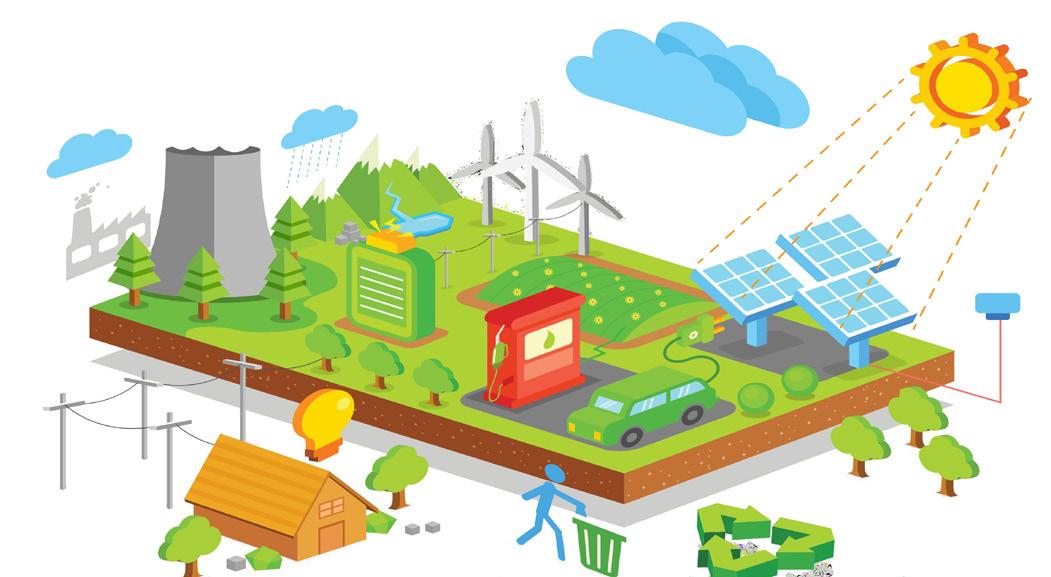
Over the coming 15 years, the world will need to invest around US$ 90 trillion in infrastructure. Much of this investment will need to be “greened” to secure an orderly transition to a sustainable economy.
The United Nations Conference for Trade and Development estimates that about US $5 trillion to $7 trillion annually will be needed to finance the realization of the Sustainable Development Goals promoted by the UN in developing countries, which includes infrastructure development, poverty eradication and other key goals core to sustainable development.
Successful economies in the 21st century will protect and even replenish the planet’s ecosystems, reversing century-old economic norms that justified extensive environmental damage as societies developed.
The environment was seen as a “luxury good,” paid for by societies only when they became rich. Such norms explain why the dramatic rise in global income, eightyfold in real terms in the last century, has led directly to a decline in environmental capital — the world’s stocks of natural assets such as geology, soil, air, water and all living things — in 116 out of 140 countries, according to the United Nations Environment Program (UNEP). Around 1 in 8 premature deaths globally are caused by air pollution; greenhouse-gas emissions add energy to the Earth’s atmosphere at a rate equivalent to the detonation of four nuclear bombs every second; almost 22 million people were displaced in at least 119 countries by natural disasters in 2013; and 21 of the world’s 37 largest aquifers have passed their sustainability tipping point. pathway throughout its recent industrial development, experiencing catastrophic air pollution and extensive contamination and depletion of both land and water, with tragic consequences for human health and safety. China now understands the urgent need to care for the environment well in advance of its becoming a wealthy society. This is an unprecedented task, requiring an estimated additional annual investment in China of US$ 600 billion to finance remediation, protection and low-carbon, natural capital-saving industries such as renewable energy and electric vehicles.
Other major developing economies, similarly, from Brazil to India, and from Kenya and South Africa to Indonesia and Mexico, are now grappling with the comparable challenge of “going green” before they become materially prosperous. As Dr. Rathin Roy, director of the National Institute of Public Finance and Policy, concluded, “From India onwards, all developing countries will have to industrialize without recourse to growing fossil-fuel consumption. No country has done this before.”
Developed economies are also facing intense pressures to deal with their global environmental footprints. Most of their own rivers and land are no longer polluted. But their global investments and supply chains create extensive environmental harm, just as their carbon-intensive lifestyles and economies contribute disproportionately to climate change.
Transitioning to a green, global economy provides immediate business and economic opportunities, as well as being an existential imperative. For example, renewables represented approximately 62.5 percent of net additions to global power capacity in 2015, and the market size of electric vehicles expanded 60 percent in 2014. The need to ensure environmental security is driving technology and business innovation, which in turn is driving up productivity in key sectors and providing new employment opportunities as fossil-fuelintensive and polluting industries decline.
Financing a timely, inclusive green transition is our greatest, collective, economic challenge.
Public finance has an important role to play. However, this role will be limited by the scarcity of public funds and competing shorter-term priorities.
For China, estimates indicate that only 15 percent of its green finance needs are likely to come from public sources, with the remainder having to come from private investment. The use of innovative instruments that use public finance to crowdin private capital will help certainly, whether through tax credits, blended financing used increasingly by development finance institutions, the deployment of sovereign wealth funds or even the use of central bank balance sheets. Deep-rooted changes will nevertheless be needed to ensure that the world’s financial and capital markets are doing the right thing for savers and investors, and for wider society. As Bank of England Governor Mark Carney said, the financial system needs a “reset” if it is to be aligned to the needs of a low-carbon economy that delivers private financial returns while benefiting communities.
Recognizing the need to align the financial system with the needs of tomorrow’s inclusive, green economy, China established a green finance work stream
under its presidency of the G20. The G20’s Green Finance Study Group’s is co-chaired by the Peoples’ Bank of China and the Bank of England, and supported by the UNEP acting as secretariat.
China’s decision to include green finance in the G20 agenda was a significant innovation, particularly as it was placed in the finance track, bringing it under the authority and responsibility of finance ministers and central bank governors. Further amplifying this innovative step, three other groups associated with the G20 simultaneously initiated work on green finance: the “B20” group of companies, particularly banks and investors; the “T20” group of think tanks from across the G20; and the “C20” group of civil society organizations.
China’s G20 initiative on green finance benefited from initial inputs from three major sources. The first was China’s Green Finance Task Force, established in early August 2014, co-convened by this article’s two authors on behalf of the Chinese central bank and UNEP. This task force, comprising 45 policy, regulatory and market institutions, published a set of 14 recommendations to advance green finance, covering fiscal, standards, regulatory, judicial, and institutional innovations and instruments, many of which have now been incorporated into China’s 13th FiveYear Plan (2016-20). Although exclusively China-focused, the recommendations drew heavily on international experience, and have in turn provided inspiration and guidance for subsequent green finance initiatives elsewhere in the world.
Next was the exemplary lead taken by the Bank of England in advancing a prudential review of climate-related risks to the UK’s insurance sector. The review was groundbreaking in being the first such systematic assessment of climate risks undertaken by any central bank. In addition, it offered methodological innovations that have subsequently informed a generation of comparable assessments by other central banks, notably the focus on the need to transform themselves with a combination of policy, technology and business changes to mitigate risks from climate change. Building on this work, the Financial Stability Board (FSB), chaired by the Bank of England’s Carney, initiated a related, international review of climate risks, which is currently being taken forward by an FSB-hosted task force on climate-related financial disclosure. Third, the work by G20-linked committees benefited from the findings of the two-year UNEP study, titled “An Inquiry into Design Options for a Sustainable Financial System,” launched at the IMF Annual Meetings in Lima, Peru, in October 2015. UNEP’s inquiry documented the innovations in about 20 countries in mainstreaming green and sustainable finance through financial system development, including developed and developing country experiences, and across banking, insurance and the investment community. Such experiences, extending from enhanced disclosure requirements by stock exchanges to environmental lender liability for banks and product innovations such as green bonds, provided ready proof that actions already existed on the ground that could form the basis for the G20’s deliberations.
The G20’s initial assessment of international practice and options for mobilizing green finance is to be published at the G20 Summit in Hangzhou in early September, alongside a major international green finance event in Shanghai. Over its six months of initial, intensive work, the Green Finance Study Group’s G20 members have directed researchers and international organizations, including the IMF, the OECD and the World Bank Group, to assess three core aspects of the financial system — banking, bonds, and institutional investors — and two cross-cutting themes: risk assessment and impact analysis. Summarized in a number of working papers, the evidence has been drawn from market innovations, including, for example, the Industrial and Commercial Bank of China’s environmental risk stress testing program and the rapid growth of the green-bond market. It also looks at regulations and standards, such as the green-credit guidelines put forward by the China Banking Regulatory Commission and innovations in investor’s fiduciary duties.
Initial work undertaken by the G20 through the Green Finance Study Group has been mainly intended to map international practices, and to establish green finance as a legitimate, long-term agenda for finance ministers and central bank governors. The welcoming of the work to date clearly demonstrates success in this regard, and it is to be hoped that the work will continue under future G20 presidencies, such as Germany’s in 2017 and Argentina’s in 2018.
That said, a number of specific options were identified during this initial phase and set out for voluntary adoption by financial institutions and countries, and through international co-cooperation. Examples of this include: progressing green bonds as a major source of financing for green infrastructure and enterprises; capacity development, particularly of the banking community in developing countries; and improved risk models and assessment to enhance environmental risk pricing. Some other key options for development, such as the smarter use of available public finance and improved disclosure, were not included in the first year’s work.
The G20 leadership’s move to work on the topic of green finance, under China’s presidency, has had a positive impact in terms of encouraging international dialogue, policy and market developments. Many G20 countries have advanced strategies for sustainable finance, such as Italy’s sustainable financial road map, Kazakhstan’s interest in establishing the Astana Financial Centre as a regional green finance hub, the green finance initiative of the UK’s City of London, India’s growing interest in catalyzing green finance, and the European Commission’s decision to undertake a strategic review of the place of sustainable finance in the continent’s capital market development plans. Green bond markets have also been further encouraged by China’s focus on green finance, with Chin issuing over half of the world’s green bonds in 2016. The IMF and other international organizations have become far more active in the space, as have civil society organizations and the broader research community. Success is ultimately measured by the speed and volume of finance channeled into less-carbon and natural capital intensive assets. Today, that redeployment is accelerating, but still from a very small base. There is a long way to go. However, a critical step is to mainstream green finance by alerting and activating policy makers, regulators and standardsetters, as well as financial institutions. Considerable progress is being made on this front, and the G20’s focus on green finance has contributed to this progress.
Source: Caixin Online Dr. Simon Zadek is co-director of the UNEP Inquiry into Design Options for a Sustainable Financial System and DSM Senior Fellow and visiting professor at Singapore Management University. Dr. Ma Jun is chief economist of the Research Bureau of the People’s Bank of China and chairman of the China Green Finance Committee.
AFRICA WEEK 2016:
Focused on Partnerships for Agenda 2063 Climate Change: Speakers recognized that Africa has done little to contribute to climate change mitigation measures but will be among those most affected.
The UN celebrated Africa Week 2016 under the theme ‘Strengthening Partnership for Inclusive Sustainable Development, Good Governance, Peace and Stability in Africa.’ UN leaders recognized socioeconomic progress in the region alongside continued and emerging challenges, including on infrastructure and gender equality and women’s empowerment. Speakers supported South-South and triangular cooperation, and identified the African Peer Review Mechanism as an opportunity to improve good governance. Africa Week took place from 10-14 October 2016, at UN Headquarters in New York, US, on the margins of the UN General Assembly’s (UNGA) consideration of the New Partnership for Africa’s Development (NEPAD). UNGA President Peter Thomson described Africa Week as an important opportunity for the international community to recognize progress in Africa, “particularly in the political, social, economic and peace and security fields,” raise awareness of ongoing challenges, and mobilize international support to address them.


Manufacturers of all types Paper Bags (environment-friendly), branded packaging material for Supermarkets, Groceries, Grain milling, Bakeries, Cement and Pharmaceutical industries, etc.
CRANE PAPER BAGS LTD, P.O. Box 3335, Kampala, BWEYOGERERE INDUSTRIAL PARK, Plot No. 1,3 & 5, 1st Street, Bweyogere, Kakajjo. Tel: 0393 333 379, Email: creanepaperbagsltd@gmail.com/admin@cranepaperbags.com

